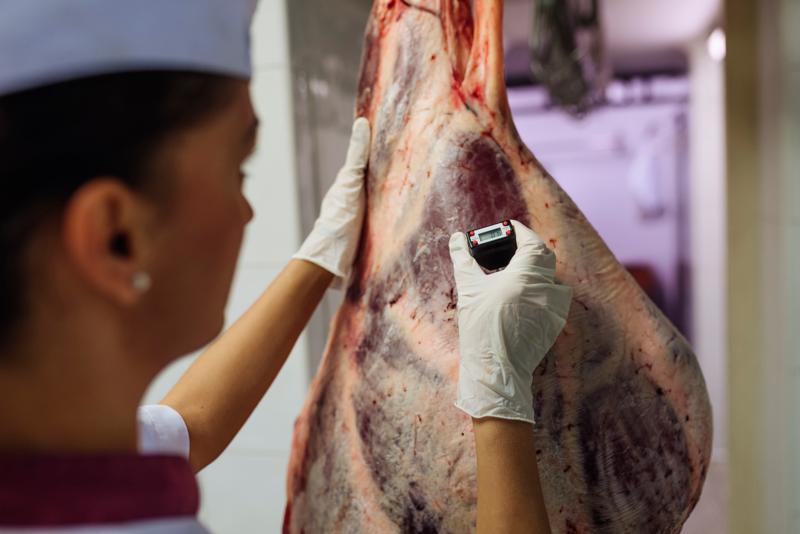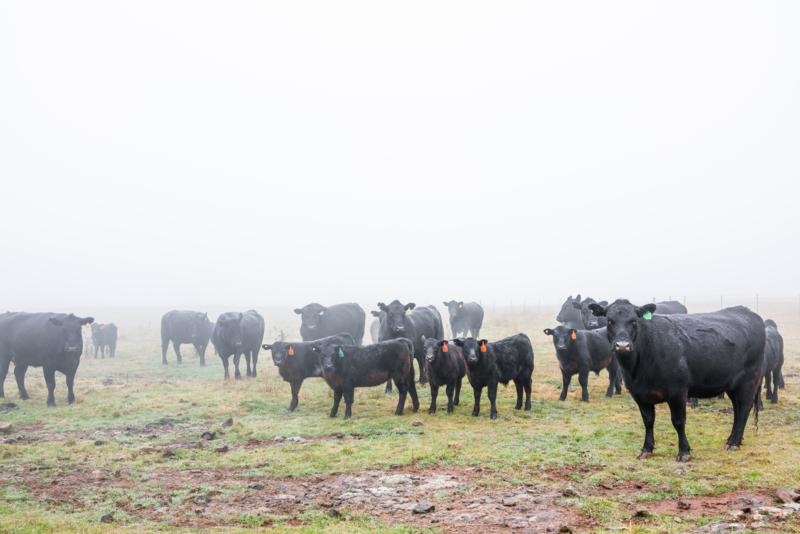EVERY day there are stories in the media about big companies merging to save costs. On paper, it looks simple – one payroll department instead of two and one office suite with centralised IT.
Now the red meat industry is investigating whether fewer industry bodies could deliver big savings and a better deal for levy payers, which will help meet future challenges. Farmers producing sheep, cattle and goats have similar interests but subscribe to a number of small organisations that rarely work together. Producers pay levies that are distributed to drive research and development.
But studies show that some farmers feel funded programs from R&D companies don’t reflect their needs, priorities or the size of their contribution, and that commercialisation and adoption of that research is variable.
With no firm guidance on self regulation, farmers can find themselves facing unnecessary bureaucracy. There have even been instances, such as the live export furore, where different facets of the industry – processors and producers – ended up arguing with each other, making it even more difficult for the industry to market itself, and its good practices, effectively.
Concern about this inability to join forces and act with one voice has been a recurrent theme in submissions to a white paper released by
the Red Meat Advisory Council (RMAC). Being governed by too many small organisations means pitches to market, government or industry and plans for the future of red meat are so fragmented and inconsistent they’re rendered useless, the paper explains.
A suggestion is that what’s needed instead is an organisation that is strategic, well-resourced and smart. Something that can focus on the big issues, drive innovation and help shape the knowledge and behaviours of our farmers.
 Meat processors are among Australia’s most profitable industries and biggest manufacturers. Source: Getty Images/iStockphoto.
Meat processors are among Australia’s most profitable industries and biggest manufacturers. Source: Getty Images/iStockphoto.
The white paper’s main response to these concerns is to create three new streamlined and unified industry bodies: Red Meat Australia, a single Red Meat Research Body and an industry standards forum. Red Meat Australia would be the single voice for the Australian red meat and livestock industry.
RELATED ARTICLES:
Paddock-to-plate beef business masters supply chain
Clever beef farmers create innovative market for bone broth
The sheep farmers breeding success through genetics
Making profits from goat farming
Meat is one of Australia’s most profitable industries and meat processors are among its biggest manufacturers. United, they could be a formidable force. The question is whether they have sufficient mutual interests. The white paper has outlined how it could work with three new unified industry bodies, or ‘NewCos’.
The three new unified red meat industry bodies, or ‘NewCos’
NewCo1: Red Meat Australia
This would abolish the Red Meat Advisory Council and would provide a single industry voice and coordinated approach to activities and resources. It would receive all industry levy funds and any matching Commonwealth contribution, allocating them to the Red Meat Service Provider (NewCo2) and the Integrity Forum (NewCo3) in cooperation with existing peak-body councils. It would also have oversight of the Memorandum of Understanding and the Meat Industry Strategic Plan.
NewCo2: Red Meat Service Provider
This would combine the core functions of the Australian Meat Processor Corporation, LiveCorp and Meat & Livestock Australia (MLA). It would determine how levies are spent on research and development programs, resources and activities.
NewCo3: Integrity Forum
This would strengthen and coordinate core functions from SAFEMEAT, AUS-MEAT and the National Livestock Identification System and develop mandatory integrity systems. These would explore options for stronger commercial returns on functions and activities.
The result, the white paper claims, would be less bureaucracy and duplication and a more cost-effective, business-centric and accountable organisation. With a powerful single voice, Red Meat Australia could act more swiftly to resolve issues, reduce red tape and get better value for levy payers by providing a cooperative approach to marketing, R&D, and other activities.
 Angus cows and calves in the Central West of NSW.
Changes needed to the Australian red meat industry
Angus cows and calves in the Central West of NSW.
Changes needed to the Australian red meat industry
It is 20 years since a Memorandum of Understanding was produced for the industry to define roles, responsibilities and funding, so an overhaul was long overdue.
The industry knew it needed to be future-focused to deal with a range of issues including drought, global warming, fake meats, dietary advice to eat less meat, animal activism, changes in the international market and greater interest from consumers in issues such as provenance and sustainability.
In September 2018, the Red Meat Advisory Council commissioned an independent review chaired by leading policy review expert Jim Varghese, supported by a nine-member taskforce. In February 2019 it released a green paper, with five options.
Initial green paper recommendations: Five basic options going forward.
- Keep existing provisions in place but redraft the current Memorandum of Understanding.
- Remove the current arrangements and then let the industry evolve organically over time.
- Establish a hybrid model to merge the functions of service providers and peak industry councils.
- Establish a revitalised red meat industry led by the new organisation, as outlined in the paper.
- Another stakeholder idea. In the white paper, option 5 was taken up to present the plan for three unified bodies.
After a consultation process, the white paper was launched in July, with the suggestion of forming three, unified bodies added. The resulting white paper is intended as a consultative document and some elements are contentious.
There has long been dispute about levies, with some industries complaining they get less back for their money than others, and allegations of a lack of transparency about intellectual property. At the moment, the majority of producer levies go to MLA for R&D, and marketing.
RELATED ARTICLES:
How drought is affecting red meat prices – the highs and lows
Would you eat meat grown in a lab?
Sustainable Merino farm turns to perennial grasses
The remainder is distributed between
Animal Health Australia and the
National Residue Survey. In addition, the red meat industry is no small fry. According to the
MLA’s State of the Industry Report 2018, it employs 438,100 people and has an annual turnover of $65 billion.
It has a wide variety of stakeholders including sheep, goat and cattle farmers, feedlotters, meat processors and wholesalers. It will be up to all these stakeholders to comment on the white paper and decide what should happen going forward.
Our two key livestock export bodies, the
Australian Livestock Exporters’ Council (ALEC) and
LiveCorp, have said they are keen to merge. ALEC has praised the idea of a true advisory body for the entire red meat supply chain, while the Australian Meat Industry Council, representing processors, wholesalers and retailers, has said it supports the broad aims to promote a competitive and streamlined industry.
_preview%20(1).jpg) Combining the meat industry’s representative groups – from producers to processors – is on the table. Source: Australian Meat Industry.
Combining the meat industry’s representative groups – from producers to processors – is on the table. Source: Australian Meat Industry.
However, some farmers have expressed concern that wholesalers and processors will have increased power, which could mean their own industry will lose its voice. NSW Farmers is now asking all members to engage and provide their opinions.
“They need to direct our response,” says senior policy advisor – livestock Steve Bignell.
“We really want to know their feedback. We’ve got different commodities and we’re aware members have different perspectives. We want to hear from everyone.”
NSW Farmers’ president James Jackson adds, “These potential changes to the red meat industry are momentous. They will impact how producer levies are spent and industry’s role in setting the research and development agenda. They will also affect and change the role of state farming organisations and peak industry councils.
“Given the significance of these reforms, it’s important that the voices of grassroots producers are heard. Copies of the RMAC white paper and [the federal government’s] Modernising the Research and Development Corporation System discussion papers are available online. Get involved and help us achieve desirable outcomes for our producers and all businesses involved in the red meat industry.”
Industry opinion: the sheep producers’ perspective
 CEO of Sheep Producers Australia Graham Smith says it’s important to work more closely with meat processors, probably the largest manufacturers in Australia.
CEO of Sheep Producers Australia Graham Smith says it’s important to work more closely with meat processors, probably the largest manufacturers in Australia.
Overall we’re pretty comfortable with the white paper. There was a lot of consultation done by an independent group and we’re happy with where they got to. The real work starts now: How do we make it work effectively?
We’re interested in looking at what elements could be further developed and ultimately implemented. For instance, there’s a bit of a jigsaw puzzle around the three NewCos. What do they focus on? What’s their core purpose? What’s the funding mechanism to support them? What other organisations need to be considered?
As farmers frame their responses, they need to ask themselves, do we believe the sector will be subjected to great or little change over the decade?
We foresee great challenges in many areas. We export about 60% of our production but we can’t guarantee that will continue. Look at our dependency on China and the emerging political tensions there. America is our second-largest beef market but 50% of our beef in essence is hamburger mince and there is competition there from Brazil and alternative proteins.
We also believe live sheep exports will be a smaller percentage of the total market in the Gulf States and Middle East over the next decade because of the rising power of the supermarkets. So there’s a need for us to diversify our sales channels into more chilled and frozen products.
Increasing opportunities mean we have to take a paddock-to-plate view and work more closely with our meat processors, who in many ways are our main exporters and probably the largest manufacturers in Australia.
RELATED ARTICLES:
Regenerative paddock-to-plate business tastes good
From paddock to Asia, the brand smashing the supply chain
I can see NewCo1 running in a similar way to New Zealand’s Federated Farmers model, which has chapters with subcommittees held together by a national board. That could ensure sheep, cattle and goat farmers still have a voice.
It’s inevitable there will be conflicting views. No mode will stop that, and nor should it. Diversity equals strength. However, we do need to reduce fragmentation, improve strategic thinking and provide a unified voice. If you take drought at one end of the spectrum and competition at the other, it’s important our industry is fit for purpose.
The worst outcome would be for this white paper to be shoved in a drawer and forgotten about.
Industry opinion: the beef producers’ perspective
.jpg) President of the Cattle Council of Australia and member of NSW Farmers’ Cattle Committee Tony Hegarty says producers need greater input into decisions that affect them.
President of the Cattle Council of Australia and member of NSW Farmers’ Cattle Committee Tony Hegarty says producers need greater input into decisions that affect them.
There is no compelling evidence nor specific detail that outlines how the proposed Red Meat Australia would realise better representative outcomes for beef cattle producers. There are clear producer concerns about several elements of the proposals, especially the role cattle producers would have in governance, given grass-fed producers contribute the largest red meat industry levies.
Our extensive consultation with members demonstrates producers are unwilling to cede any share of industry representation or say in how levies are spent.
Greater clarity is needed to outline how producers could provide direct input into decisions that affect them.
Specifically there is no compelling evidence, nor specific detail, which outlines how the proposed Red Meat Australia would realise better outcomes for beef cattle producers.
Cattle Council agrees there is scope for better governance and accountability of service providers but the case is yet to be made in terms of how any restructures or mergers would achieve better outcomes for producers and other levy payers.
However, we’re open-minded about other proposed reforms. The scope for efficiencies that could be achieved under a single red meat research body is attractive, but any such consolidation would need to embrace strong producer representation and accountable levy investment.
NewCo3 has strong producer support, although Animal Health Australia is not included in any proposed structural changes and this needs to be addressed, especially given the importance of biosecurity and emergency disease response to our industry.
This is also an opportunity to properly fund and structure many of the industry systems that underpin our market integrity. Bodies such as the National Residue Survey, for instance, need to be funded while remaining independent, while the integrity of AUS-MEAT’s independent auditing functions must be maintained.
Industry opinion: the young farmers’ perspective
.jpg) Tracey Gowen is a cattle farmer, vet and NSW Young Farmers’ representative of the Cattle Consultative Committee says it would be beneficial for different sectors of the industry to communicate and collaborate more openly. Source: supplied.
Tracey Gowen is a cattle farmer, vet and NSW Young Farmers’ representative of the Cattle Consultative Committee says it would be beneficial for different sectors of the industry to communicate and collaborate more openly. Source: supplied.
There are many issues impacting the future of farming in Australia, from trespass concerns to climate change, from biosecurity to inconsistent and disjointed policy and legislation. All make long-term business planning difficult.
I’m not convinced there was sufficient industry consultation prior to the release of the white paper, and therefore that the suggested changes are reflective of the needs and goals of our industry.
It’s also a suggested broad overview, so my greatest concern is that there’s a lack of detail as to how the new Memorandum of Understanding will improve cohesion and consistency in policy or cement legislation targets through advocacy.
There’s a definite benefit to reducing costs – such as administrative costs of duplication of similar research – and it would be beneficial for different sectors of the industry to communicate and collaborate more openly.
However, I believe it could be damaging to our export markets if we lose the respected brand that Meat & Livestock Australia has created. I also believe forcing industries into a single body without strong support from everyone will be detrimental to all parties.
It could result in the creation of a structure for industry, rather than by industry, and not be the best model. We need to work together to ensure whatever structure the industry has going forward, it provides the greatest benefits in terms of research, development and extension, advocacy, policy development and integrity systems.
It’s essential members, especially our young farmers, respond to this document and let us know what they want done with their levy money – how they want it spent and where. We need a structure that is resilient, fit for purpose and provides the best return on investment.
If the current drought has demonstrated anything, it’s the lack of cohesion in drought policy – and that’s echoed through government and industry in a number of issues. We need a better structure for dealing with events before they occur.
**For more information and to read the white paper, go to rmac.com.au/mou. Send your feedback to [email protected].